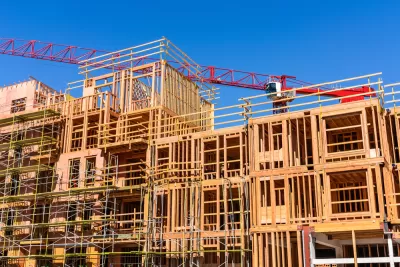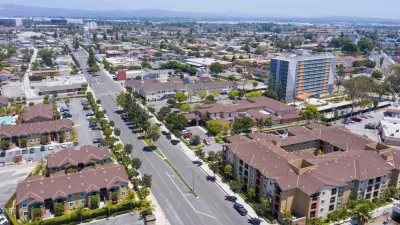Meanwhile, cities say the state’s housing needs assessment sets impossible goals for affordable housing production.

California’s affordable housing crisis continues to create conflict between cities and the state, which recently implemented stricter enforcement measures for its Regional Housing Needs Assessment, an evaluation conducted every eight years that calculates the state’s housing needs. “The state determined the six-county region covered by the Southern California Association of Governments, or SCAG, needs 1.34 million new homes by the end of the decade, an average of nearly 168,000 homes per year, adding enough housing for a population roughly the size of Chicago.”
According to an article by Jeff Collins in The Orange County Register, “South Pasadena remains an example of how some Southern California cities are failing to adequately plan for future housing needs, pro-housing advocates say.” The article cites examples of unrealistic projections, which include sites that have little chance of redevelopment. “South Pasadena’s first draft housing plan envisioned building 49 homes on the 1.2-acre site that now houses City Hall and the police and fire stations. The plan was dropped in the revised ‘housing element’ released on April 21 because the city had no firm plans for relocating City Hall.” Collins notes that the city revised its plan in April to reflect more realistic projections.
In the past, the state rubber-stamped city housing plans even when they had a low chance of meeting their targets. “Now, new laws require cities to fully document why each site has a reasonable chance of getting developed by October 2029, the end of the current planning cycle. New measures also require municipalities to include plans for low-income housing in ‘high resource’ affluent neighborhoods and to take steps to undo historic patterns of segregation.”
The issue goes far beyond South Pasadena. “A 2021 analysis of 10 draft housing elements by Mapcraft Labs concluded that about 70% of proposed housing sites were unlikely to provide the projected number of units by the end of the decade.”
City leaders, meanwhile, argue that state allocations set unrealistic goals. “We are a built-out city, and our numbers went from 63 (homes) in the last cycle to 2,067,” said South Pasadena Community Development Director Angelica Frausto-Lupo.
FULL STORY: Southern California housing plans contain ‘fake sites,’ lack analysis, critics say

Planetizen Federal Action Tracker
A weekly monitor of how Trump’s orders and actions are impacting planners and planning in America.

Map: Where Senate Republicans Want to Sell Your Public Lands
For public land advocates, the Senate Republicans’ proposal to sell millions of acres of public land in the West is “the biggest fight of their careers.”

Restaurant Patios Were a Pandemic Win — Why Were They so Hard to Keep?
Social distancing requirements and changes in travel patterns prompted cities to pilot new uses for street and sidewalk space. Then it got complicated.

Platform Pilsner: Vancouver Transit Agency Releases... a Beer?
TransLink will receive a portion of every sale of the four-pack.

Toronto Weighs Cheaper Transit, Parking Hikes for Major Events
Special event rates would take effect during large festivals, sports games and concerts to ‘discourage driving, manage congestion and free up space for transit.”

Berlin to Consider Car-Free Zone Larger Than Manhattan
The area bound by the 22-mile Ringbahn would still allow 12 uses of a private automobile per year per person, and several other exemptions.
Urban Design for Planners 1: Software Tools
This six-course series explores essential urban design concepts using open source software and equips planners with the tools they need to participate fully in the urban design process.
Planning for Universal Design
Learn the tools for implementing Universal Design in planning regulations.
Heyer Gruel & Associates PA
JM Goldson LLC
Custer County Colorado
City of Camden Redevelopment Agency
City of Astoria
Transportation Research & Education Center (TREC) at Portland State University
Camden Redevelopment Agency
City of Claremont
Municipality of Princeton (NJ)





























